|
FAQs about Light Emitting Diode
(LED) Lights, Fiber Optics,
and Lighting for Marine
Systems 2
FAQs on: LED Lighting 1,
LED Lighting 3, LED Lighting 4,
FAQs on: LED Lighting
Science/Rationale, LED Lighting for Small Systems (< 40
gal.s), LED Lighting for Large/r
Systems, LED Lighting
Installations, LED Lighting
Troubles/Repairs, LED Lighting
Manufacturers,
Related FAQs:
Metal Halides 1, Compact Fluorescents,
Regular
Fluorescents, Lighting Marine
Invertebrates, LR
Lighting, Tridacnid Lighting, Small System
Lighting,
Related Articles: TMC's
AquaRay MultiControl, AquaBeam 1000 HD Ultra, and AquaBeam 600
Ultra on test. Review By James Gasta,
LED Lighting, the New Horizon in
Aquarium Lighting? by James Gasta, Switching from Metal Halides to LEDs by
Michael Maddox, Orphek's
Pr-156 Power Reef LED Pendant, reviewed by James Gasta,
Coral System
Lighting,
|
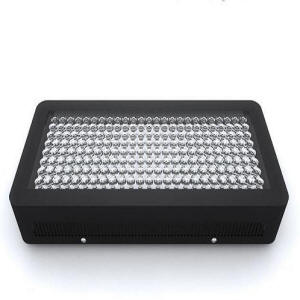
|
96x30x30 - LED Lighting
1/13/12
Hi James (aka Salty Dog),
<Hello Rick>
The 375 gallon tank and stand are built (wish I could say the same
about the new house they're intended for - slow progress).
I was "so close" to purchasing 10 Aquabeam 1000 HD Ultra Reef
White LED Tiles for the tank (Boxing Day - Hot Sale Pricing), but
J&L actually asked me to ensure they are "what I wanted"
with a 30" deep tank. So I've been researching other options -
the Kessill A150W LED pendant and the Orphek (I've heard there are
issue with this Brazilian company and may be "in trouble"),
Ecoray 112, the EcoTech Radion and the list goes on.
My question would be (considering you did a review on them), what could
I expect to "grow" with 10 of the Aquabeam 1000 HD Ultra Reef
White LED Tiles in a 30" tank? If the answer is "almost
nothing near the bottom of the tank", do you have any suggestions
or recommendations.
<The PAR reading results were at 600mm in depth (23.4") and
averaged around 120.
I would think with 6" added to the depth the PAR reading would be
somewhere under 100.
Without actually knowing what the PAR level would be, I cannot state
what would grow at that depth.
My recommendation for your tank would be the Orphek PR156. PAR results
and suggested placement of these fixtures on a 96"x30" tank
can be found here.
http://blog.captive-aquatics.com/captive_aquatics/2010/09/orphek-pr-156-reef-aquarium-led-light-review.html
You may want to look at this recent PAR testing of several LED fixtures
that was conducted by Sanjay
Joshi, Ph.D. Be sure to read the conclusion.
http://www.advancedaquarist.com/2012/1/aafeature>
Appreciated,
<You're welcome. James (Salty Dog)>
Rick
Greetings from Doponder Roger
1/6/12
Hi Sir,
<Roger>
How are you doing today? Trust you are doing well, This is Roger from
Doponder Company.
Nice to inform you, Our R&D department have great success in the
third generation LED tube,
It is a kind of products we niche the market to help you easy to open
your market and get more profit in retail.
Product advantages are,
1) Mild lighting, comfortable for eyes, once you test you will find the
difference.
2) Easy to be install, smart IC driver can adapt any circuit without
change
3) New material make low temperature and the heat less (body
temperature <45degree)
If you are doing good in retail market or plan to join in this market,
We are eager to cooperate with you.
B.T.W you also can find the safety testing in YouTube.
http://www.youtube.com/watch?v=EcYrX_zh7EM
Looking forward to heard from you .
<We are not a retailer, strictly an information
site.>
Thanks again
<You're welcome. James>
your sincerely
New LED Lighting 1/4/12
I have read your advice for years and appreciate your guidance. I went
from a novice to an advanced aquarist with many inhabitants that I
cherish and appreciate on a daily basis.
<Keeps us going!>
I have a very well established reef tank that is a typical 180 long
(72"x24"x24"). I had two 400 watt MH lights (14k) and a
250 watt HQI (12k) in the middle. This was accented with 3 4 foot T12
VHO actinics.
Recently, I had a ballast fail on one of the 400 watt halides. I
replaced it with a borrowed 250 HQI as a "fix" while I tried
to figure out my long term goal. In spite of the advice given by people
who may not know as much as they try to say, the 250 seemed inadequate
in comparison to the 400 watt light based upon the short lived time I
used it as a replacement. All of the foregoing lights were suspended at
approximately 15 inches above the water.
<I see>
I house many SPS in many varieties (Monti and Acropora sp. including
traditional as well as a rare and exceptionally colorful highly green
and purple edged efflo). I am estimating about ten colonies all higher
in the water column and some LPS like acans and hammers in the right
spots lower in both flow and light. I have been fortunate enough to
balance all of this with no issues and exceptional color but limited
(thank god) growth.
The LPS (hammers especially) sometimes suffer from low nutrient levels
but I have found ways to accommodate their needs.
<All right>
To the point. After the lighting issue, I decided to jump all in into
the LED scene and purchased 5 Radion fixtures which I installed over
the new years weekend. I believe this may be a bit much, but I care a
lot about what I have in my system and many have been with me since day
1 and I am 8 years into the reef I have. I have been running the Radion
fixtures on a curve with a 12 hour cycle that maintains an approx 12k
spectrum throughout. I ramp up from 10 percent intensity to about 50%
for the first 5 hours then maintain it at 50% for 6 hours before a
steep decline to no light in the last hour. The polyp extension is good
on all of the SPS and everyone is behaving well. My parameters are
steady and things seem ok but I have no real guidance on acclimation
from MH to LED lighting and I don't want to screw it up.
<Best done, moderated over time w/ measuring device/s... PAR, PUR
meter/s.
Have you gone over Antoine's article here:
http://www.wetwebmedia.com/acclimcoralslight.htm
and the linked FAQs file above?>
I can see a huge difference in the type of light in the tank.
<Seeing is not reliable>
Not just the slight Kelvin difference. The LEDs are very much a
different kind of light altogether. They throw some crazy light effects
off the blue tips of Acros and just almost tire the eyes with their
constant, what appears to be a, flutter or flux (at a loss for what I
see, but its definitely different from anything I've seen. I
don't recall seeing this on AI fixtures and they are the only other
LEDs I've experienced so it may have something to do with the
Radions offering more spectrum.
<Mmm, yes; or less actually... and certainly our/human capacity for
registering such>
Its really cool to see but, again, it makes me realize I have taken a
risk and jumped into something. I am not comfortable putting my tank at
any kind of risk at all but I needed a light fix and the timing seemed
right.
<Is likely fine... Think on the need/evolution of light-using
life... most all are widely photo-adaptive>
To that end, does anything I am currently doing seem wrong in any way
and how do I ramp up to more intensity?
<Mmm, adding more energy to the present fixtures (w/in reason)
and/or adding more fixtures... ONLY if needed, again as measured by
your appreciation and measure of useful photonic energy>
Also, should I even consider ramping up over time or should I leave
things the same if it all seems good to go?
<I'd leave as is for now>
I realize I may have more PAR potential than I did before (may being
the key because, even with due diligence) I'm the dummy that jumped
in without definite knowledge). Given my limited understanding of the
use and effects of LED lighting on the reef. Any advice is greatly
appreciated and I am stressing that what I have done in the last few
days will be determined in a couple weeks (as all things seem to be in
my aquarium).
Otherwise, I went from running a 2 degree temp swing running a 1/3 hp
chiller and a total of approx 1500 watts of light to a rock steady .2
degree temp variance if that and no chiller with 650 total watts if I
run these lights at full intensity.
<Appreciable electricity savings>
I am hoping I am pleased with my electrical bill but I haven't seen
one yet and I am hoping I am doing this right. Obviously, with the
money spent, the inhabitants are my main concern, however, I feel a bit
better about not being as much of an energy hog. Thank you in advance
for some guidance on a topic that seems relatively unexplored. This is
my first time I have written although I have referenced your great site
for years. Perhaps that explains my long windedness but I really want
to make sure I get this right and I have no basis for comparison of my
approach to what others are doing.
Thank You!
David Salim
<Welcome David. Bob Fenner>
Re: LED Aquarium Light 55X3W.pdf from
CIDLY LED 12/17/11
Hi Bob
How are you?
I get the mail from James but i can't reply him because of the bad
connector.
Will you please forward the mail to him? Here is the mail below.
Glad to hear from you.
<Hello Ranson>
We would like to the reviews about our light in your magazine although
we never did this before.
Here the Lumen is 5040 lumen.
<Mmm, if this is true, this is not enough light to support coral
growth. Would have to be in the
20,000+ range. I would not be interested in evaluating/reviewing your
fixture if your lumen value is correct.>
Sorry what the PUR value means? It means PAR value?
<No, PUR means Photosynthetically Useable Radiation. PUR differs
from PAR because the basic definition of PAR is any light in a specific
frequency range. PUR is the usable portion of PAR which photosynthetic
life respond to, and different photosynthetic invertebrates can have a
different PUR range to which they respond to.
PUR is a much more useful way to compare LED lighting than any other
method providing the intensity is there (lumens). Most LEDs emit
excellent PAR, but in many cases only 50% of the PAR is PUR. The higher
the PUR the more effective the LED will be for supporting
photosynthetic life. PAR value is only useful if the frequency range of
the light falls into the PUR range.>
Sorry don't have the spectrograph of the nanometer range.
<Is very useful to have. I myself would not buy a LED fixture
without seeing the spectrograph.>
One last thing, I fail to find the Reviews on the TMC LED in your
website below.
http://www.wetwebmedia.com/ca/WWMDigPermanentRefPg.htm
Will you please give me more info about the led lights?
<Go here and scroll down to WWM Digital Magazine and click on it,
then click latest issue.>
Best Regards
<And to you. James>
Ranson
12k led lighting 12/8/11
So I've been looking through your web site for some time now trying
to find out information for the most part I am able to find what I need
and haven't had the need to ask anything directly. I have a big 200
gallon tank 5 feet long 2 feet deep about 18inches wide I believe, with
the rest of the water volume being held in a built in sump running
along the back. Currently its a fowlr tank that I'm looking in to
upgrading to a reef tank I'm currently considering getting some
Ultra Bright Reef Aquarium l.e.d.s (20" long and 12k spectrum) and
am wondering if these l.e.d.s need supplementing in the form of actinic
lighting?
<Mmm, no; but I'd look into TMC's product line instead. Read
here:
http://www.wetwebmedia.com/TMCLEDRevGasta.htm
and the linked files above>
My light system is currently 4 t12's 2 feet long with two blubs
being black lights and two being 10k Coral life bulbs. I inherited the
tank from my dad about 15 years ago or so and it sat in my house till i
was able to set it up again about 5 months ago. With the current set up
my dad was able to keep an Anemone for about 2 years until he passed my
brother who was living with him at the time sold all the fish and gave
me the tank. I know that the bulbs are out dated and am looking into
leds for the energy savings. My plan was to get 2 of the 12k's (
and 2
470nm blue strips per light for a total of 8 led strips. would this
cause bleaching/be excessive?
<Do you already have/house photosynthates here? Should be fine w/
acclimation of your existing photosynthetic life... Read here re:
http://www.wetwebmedia.com/acclimcoralslight.htm
Thanks in advance for your help love your web site
Chris
<Welcome! Bob Fenner>
Re: 12k led lighting 12/8/11
Wow thanks for the quick reply Bob. I currently do not house any
photosynthetic organisms, as I was told by my lfs that I would need
"more intense lighting like that of m.h. to keep them alive long
term."
<Mmm, not a fact... depends on what species... other sources of
nutrition often>
As I don't feel its fair to keep them if I'm just going to
starve them of the needed light. I did inform him of the nem my dad was
able to keep till his passing and the lfs guy said that it was probably
a low light requiring species.
That seemed plausible to me at the time. Thanks again for the info and
quick reply. Ill keep reading your site as it if full of useful
information.
<Ahh, this is best. Cheers, BobF>
Chris
|
TMC Ultra 1000HD LED 12/2/11
Hi Bob,
<James>
After using these LEDs for a couple of months now I believe they
will support most, if not all photosynthetic animals. A light
loving Tridacna crocea (pic attached) has been doing great the
last two months under this lighting.
Cheers,
James
<Thank you for this. BobF>
|
|
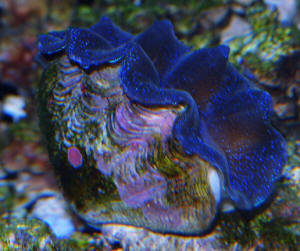
|
PAR Readings On Various LED Fixtures
11/27/11
Hi Bob,
May want to post this link in the dailies. May be very helpful to all
folks considering purchasing a LED fixture.
http://marine-engineers.org/reef-par-database-led-fixtures/
Cheers,
James
<Will do. Thanks. B>
Re: Lighting, Skimmers'¦and
a dearth of info provided -- 11/15/11
Ah okay, as for the lighting I am lighting a 20 gallon
tall. Will the TrueLumen LED light strip 12000k be
good?
<<Not for more than providing some visual
enhancement'¦these units appear to be no more than
'moonlights'>>
What corals could I grow under this light?
<<Nothing requiring any kind of PAR value. You really do need to
do some reading/research. Start here and do also read among the links
in blue (http://www.wetwebmedia.com/corllgtg.htm). In my opinion, you
would be much better off with a suitable T5 or CF fixture for this size
tank. Even MH (70W/150W), if the desire is for high-light requiring
organisms>>
Would a Biocube protein skimmer be good for this system?
<<Not in my opinion (too small/too short a reaction
chamber)'¦though likely better than nothing, if
only to provide some oxygenation/degassing. An AquaC Remora
would be a much better option. And as before, please read
here'¦and among the associated links
(http://www.wetwebmedia.com/proskimrart2.htm). EricR>>
Anemone Lighting 11/4/11
<Hello Ken>
I have a Biocube 29 with stock lighting and had a
question about the light required for a Long Tentacle or Sebae
Anemone.
<Your tank is a bit small for keeping this anemone alive long
term.>
I don't want to take off the hood and have a metal halide lamp
because of heat and evaporation issues. I was looking into
LEDs and found the Panorama Pro LEDs. I was wondering if these
would be sufficient for an anemone in my tank and if so, how many I
would need.
<You would need at least six of these and the anemone would have to
be placed in the upper third of the tank. See Ecoxotic's Coral
Placement Guide here.
http://www.ecoxotic.com/community/wp-content/uploads/2009/10/CoralPlanningMap.pdf
. This anemone would require the same light intensity as a Crocea or
Maxima Clam.>
Each one has 12 bulbs for a total of 19w. This seems low but I have
read that they have very high PAR values. If these would work would you
suggest adding one (or more) to my existing 72w of pc light or
replacing my stock lights completely with the LEDs.
<I would rather see you go with a Bubble Tip Anemone which can
survive on less light and is much more hardy than the Long Tentacle
Anemone. Adding two of the Panorama Pro LEDs to your existing lighting,
preferably the 12K or the combo 12K/455nm.>
How many of these fixtures would I need and would I also need to add
reflectors, stunner strips, etc.
<The reflectors/optics are built in to the LED fixture. Stunner
strips won't do much for photosynthesis, generally just used for
color pop.>
Any advise would be greatly appreciated.
<May want to read here.
http://www.wetwebmedia.com/macrodoreensis.htm
http://www.wetwebmedia.com/marine/inverts/cnidaria/anthozoa/bubbletipanemone
s.htm>
Thanks!
<You're welcome. James (Salty Dog)>
LED Lighting 11/3/11
Hi Crew and to my favorite responder Salty dog,
<Hello Sam, and Salty is with you today.>
I did some reading on WWM about LED's but the articles I read did
not have dates. This technology is changing so fast I really think they
should be dated.
<I agree, if it's an article I have written, let me know and I
can give you a date it was penned.>
One general question I have is regarding the life of a bulb.
<They are actually semiconductors, no filaments.>
They are advertised as lasting for 50,000 hours. But that is when they
burn out. How long are they good for your corals. I know it depends on
the brand but is there any known range between best and worst.
<Because LEDs have no filaments to deteriorate from heat, Kelvin
temperature and intensity are said to remain constant over the life of
the LED. I doubt if anyone has ever tested an LED in real time for
50,000 hours. The rating is likely based on engineering data.>
Or do you wait till your corals tell you there is no enough light. I
have a 24 gallon Aquapod with a variety of LPS. About six weeks ago I
bought an LED fixture that has 3w CREE lighting for a total of 72w half
white and half blue. Previously I had 96w T5.It really looks nice. It
has two power sources each controlling half the lights. One controls
the two outer lines and the other the two inner lines. So far I have
one on 10 hours a day and the other only 5 hours. Most of my corals
seem to like it. One open brain went from bright red to hot pink and I
am afraid it is too strong so I moved it down to the bottom which is
where they belong anyway. I am not sure if I want to extend the 5 hours
of the second set. Any opinions?
<LED lighting can be tricky to the eye. Because quality
manufacturers do not want to waste the energy on unneeded spectrums,
the LEDs are generally bin picked to provide a range from 450-700
nanometers which is considered photosynthetic usable radiation (PUR),
the range in which photosynthetic animals best respond to. This is also
the range in which our eyes are not as sensitive to brightness but the
LEDs are indeed very bright in that spectrum, we just do not notice it
as we would with T5, HQI, and MH lighting. I can attest this with my
own system. I replaced six 39 watt T5 HO lamps with three 30 watt LED
tiles. The T5s appeared very bright compared to the LEDs, but an actual
lumens measurement of the LEDs delivered 27,900 lumens compared to the
19,135 measurement of the T5s. So in some cases, depending on the power
output of the LED fixture, it may be beneficial to acclimate your
animals to the new light by gradually increasing the photoperiod a
little bit every day.>
The other question is the optics. I don't know if I should use them
or not.
So far I have them on. As I understand it they focus the light more.
But since this is so strong for my tank maybe it would be better to
diffuse the light.
<You can try this but a lot depends on the depth of your tank which
in your case it may be better not to use the optics.>
Most of the fish took a few days to get used to it but my Royal gramma
is behaving very strange. He used to swim all over. Now that there are
shadows he pretty much keeps to the shadows and ventures to the lighted
area only once in a while.
<Royal Grammas do not favor intense light to begin with so this
behavior isn't out of the norm considering the increase in
intensity.>
He was boss of the tank but now the other fish seem to like it that he
keeps himself secluded.
Thanks,
<You're welcome. James (Salty Dog)>
Sam
LED Spot lighting
10/29/11
Hello, it has been a while since I have asked a question directly. Most
of the time I find the answers to my questions in the vast amount of
information you have built over the years on your website. It truly is
an asset.
<Ah yes>
My question today has to do with leds for a sparsely populated reef
tank. I have a crocea clam that is about 5 years old now and has
increased in size considerably over time under 175 watt 10k halides. It
is by far, the most light demanding specimen in the tank. I have
recently moved into an Incorporated town with ridiculous electric
rates! I am an avid diyer so want to try my hand at an led fixture.
Using known, quality products to create a light that fits my needs. My
tank is a 180 with the clam in the middle and just a few other, less
demanding corals, throughout the tank. My thought is, why buy 110 leds
to light the whole tank when I only need the intense light in specific,
permanent spots. I can use high quality leds with a more focused lens
where needed, and light the rest of the tank with a lens that spreads
the light more evenly, to less than normal reef standards. It would
save energy, and look pretty neat in my opinion. I would always be able
to upgrade in the future as well. I guess my question is, how much
should I be using to focus on the clam?
<A good deal. In other words, I do think some simple reflectoring
about the Crees will do it here>
It is 10" below the surface, I would think maybe 2 or 3 focused 3
watt daylight Cree leds should do the trick?
<Try this out... w/ a PAR meter to test>
I am certain there will be some adjustments, but want to shock the clam
as little as possible.
Thank you for any input!
Rob
<Please do report back your observations. Bob Fenner>
Your recent query on BTA
lighting
Marineland PAR Chart 10/16/11
Hi Simon,
I read your response on this query regarding the Marineland LED
Strip.
Lighting: Marineland LED Reef Capable- 18- White 1 watt
LED's, 3- Blue 1 watt LED's. Rated 130/12700 PAR/LUX at
12'
<Really? This seems high, is certainly enough>
I'd just like to inform you that the 130 PAR at 12" can
be a little misleading. If the Apogee
meter were moved just three inches off center of the fixture, the
PAR level drops dramatically, down to
61. As long as the BTA was no more than 12" deep and dead
center with the lighting, it likely would be enough.
Marineland does print the chart on their packaging. See attached
Word document.
Cheers,
James
|
|

Re Your recent query on BTA
lighting 10/16/11
Hi Simon,
<Hi James>
I read your response on this query regarding the Marineland LED
Strip.
Lighting: Marineland LED Reef Capable- 18- White 1 watt
LED's, 3- Blue 1 watt LED's. Rated 130/12700 PAR/LUX at
12'
<Really? This seems high, is certainly enough>
I'd just like to inform you that the 130 PAR at 12" can
be a little misleading. If the Apogee
meter were moved just three inches off center of the fixture, the
PAR level drops dramatically, down to
61.
<Ahhh, one of these 'blade-type' LED's - I am not
a fan>
As long as the BTA was no more than 12" deep and dead center
with the lighting, it likely would be enough.
Marineland does print the chart on their packaging. See attached
Word document.
<Mmm, do we have the posters email address still handy?
Perhaps we should forward this on to her>
Cheers,
James
<Thank you James, Simon>
Re Your recent query on BTA
lighting
Hi Simon,
I'm sure the query has been deleted by now.
James
Re Your recent query on BTA lighting 10/16/11
Actually, I generally save about two day's back queries...
You can search by the name, title, date, size. B
|
LED lighting; new Kessil a150 32w lighting unit
10/10/11
Hello crew:
<Lee>
I've been reading many of you guys' articles for the past few
months since I recently returned to reefkeeping after a 5-year graduate
school hiatus from aquariums.
<Lots of changes, additions in the meanwhile eh?>
My question is essentially whether the new (and ultra-nifty-looking)
Kessil LED A150 lamp is sufficient for SPS (including Acropora)
growth.
<Mmm, yes>
I recently purchased a 29g Biocube which came with the standard bulbs
(it was the standard model, not the HQI edition). After regaining my
familiarity with reefkeeping and becoming comfortable with keeping my
LPS corals in a thriving environment, I found that I needed to upgrade
to either MH lighting or find an adequate LED alternative if I wanted
to move on into the SPS species, including the more light-demanding
varieties (e.g., Acropora).
<Mmm, well... the lighting will do; but the small volume, difficulty
in sustaining good water quality... A larger system would be
better>
I purchased a Kessil A150W 32w light fixture (which just landed in my
LFS's a couple weeks ago), and I love the way it brings out colors
in certain of my corals. However, while my initial research suggests
that this new light provides more photosynthetically-available lighting
for my coral, it doesn't quite seem as 'bright' as the
BioCube lights.
<Apparent brightness is not the same as effective lumination>
I'm considering spending another 250$ to buy a second Kessil
unit,
<Not for this size/foot-print, no>
but before I spend the cash I'd like to know whether the second
unit would make a difference in terms of growing Acropora, clams, and
other high-light species. Is the first one sufficient?
<Yes>
Would a second unit be redundant in terms of my corals'
photosynthesis?
<Nearly so; yes>
I wouldn't mind having the extra 'brightness' of a second
unit, but would really only want to spend the money if it made an
impact on my livestock.
<Nominally. Again, I'd stick w/ the one fixture here>
My current setup is a 29g Biocube with the standard Biocube lighting
(not entirely sure whether it's PC, t5, t8, etc;
<CF>
lighting is unfortunately a vague concept for me although I've been
reading up on it lately). I currently have corals including Favia,
candy cane, Zoas, mushrooms, xenia and daisies. Additionally I have a
couple Perculas, a blenny, a red-40 goby.
My water parameters are always 0 ammonia/nitrite/nitrate, 1.025
specific gravity.
Thanks,
Lee
<Thank you for sharing. Bob Fenner>
Overkill on LEDs?/Aqua Illumination LEDs/Application
9/24/11
<Hello Dustin>
Good morning, crew. I ran a search and couldn't find any
information at all on your site regarding the lights I'm planning
for my new tank, so I thought I'd shoot you an e-mail.
<Yes, we are starting to add content in this area.>
Due to a slew of new LED products coming out this fall, a lot of well
respected companies have started reducing prices like crazy. That being
said, I'm looking into a set of 2 AI Sol's (Super Blue) for my
40 breeder (2 for coverage, and for when I am able to upgrade the tank
to maybe a 75). The price drops and new controller firmware make this
really appealing both in features and price.
<Mmm, one Aqua Illumination 36" fixture runs $1324.00 last time
I looked.
Doesn't seem like much of a bargain to me, although they are good
LED fixtures with great PAR/PUR figures.>
Now, I'm not asking for a blatant endorsement (I've got forums
for that), but do you think this might be overkill for my tank?
<I'm not familiar with this fixture as far as light spread in a
18" deep tank. I would direct this question to Aqua Illumination
at 515-233-5105.>
I already know I'm going to have to switch out the standard 40
degree optics in the center mass for 70's to prevent spot-lighting
and burning, but in a 16" deep tank, I didn't know if I'd
even be able to run these things over 50% power without frying my
tank.
<I wouldn't think you would fry anything, but you may have to
photo acclimate
the corals to this light or any other high intensity LED fixture for
that matter.>
On the other hand, I'd really like to turn this into a nice SPS and
LPS display (no hammer's or frogspawn on the LPS side, only less
aggressive/allelopathy prone species like open brains) with a clam as
well, so maybe it'll work well for that purpose.
<May be spending more than you need to here. It appears to me that
Aqua Illumination fixtures 36" and up are designed for deeper
tanks, much like the Orphek PR-156 fixture which I am very familiar
with.>
What do you guys think? Am I using TNT to try and pick a lock here?
<I'd shop around a bit more, take a look at the AquaBeam and
Ecoxotic fixtures and compare
PAR/PUR levels versus cost and your requirements. I recently completed
a review of the AquaBeam fixture which hopefully will appear in our WWM
Digital Magazine later on this year.
I was very impressed with the color, power output, and cost of this
fixture.>
Cheers,
<Ditto. James (Salty Dog)>
Re Overkill on LEDs?/Aqua Illumination LEDs/Application 9/24/11-
9/26/11
As always, much obliged, James.
<You're welcome.>
If I could, I would offer one little correction: due to AI's
announcement of its new full-sized fixture (at least, larger than the
Nano) thus far name the "Phoenix," they have lowered the
price of both their Sol and Nano units to $400 and $300 respectively
(not in effect at all retailers yet), so I was actually able to find a
two-unit set with controller and mounting gear for about $915.
<That is a decent buy and I wasn't aware they came out with a
new fixture. Thanks for the update.>
The big draw of these was the expandability (as simple as adding
another module for a larger/deeper tank) and the automated programs on
the controller (the latest firmware upgrade they offered is getting
great reviews).
I will, however, definitely take a look at the recommended units.
I'd love to see more professional reviews of current and upcoming
LED fixtures, too, so I can't wait until Wet Web has some more to
post.
<My review is completed and should be in the upcoming issue
depending on our editor's backlog of articles to be placed. I will
say that the AquaBeam is expandable as well when used with their
Multicontrol 8 which has eight plug in outputs that will power up to
four tiles, eight strip lights, or any combination thereof.>
It seems that now, between AI, Ecoxotic and MaxSpect (to name a few),
that the competition is starting to heat up enough to drive down
prices--something always appreciated by the hobbyist (especially those
of us with spouses/children). After all, I may prefer to sell my car
and take a bus to have that new fixture, but...the wife has a slightly
different point of view.
<They are funny that way, aren't they. LED systems are much more
affordable than they were three years ago considering the increase in
light output, and do pay for themselves in time with the savings
realized by not needing to replace lamps on a yearly basis along with
energy savings.>
And is your review of the AquaBeam available anywhere online? I'd
love to read it.
<Presently, it is not available on line but hopefully will be in the
next
issue of WWM Digital Magazine. If you go to our home page,
http://www.wetwebmedia.com/, scroll down and click WWM Digital, there
is a link where you can be notified when the latest issue is released
simply by providing your email address. Information on the AquaBeam LED
line can be found here.
http://www.americanaquariumproducts.com/LEDLights.html>
Thanks,
<You're welcome. James (Salty Dog)>
Dustin
An update on my LED lighting changes (to Bob)
9/13/11
This message is regarding some correspondence I had with Bob recently.
I had originally inquired as to over-saturation of light regarding my
corals, and thought that reducing my photoperiod may in fact produce a
better effect than my current duration.
Well, I took a crack at it. I reduced my photoperiod for my full
lighting by 2 hours. I was previously running 1 hour of actinics, 10 of
full light, and another hour of actinics. I now run 1.5 hours of
actinics, 8 hours of full lighting, 2 hours of actinics. I've
observed the changes in my Stylophora over the last few weeks, and have
been pretty pleased. The rate at which I see new branches budding off
seems to have increased, while the color is deeper (never was bleached
out, but a bit too pale and I was growing concerned). The polyps seem
fully extended more often now, and the color absolutely pops.
Unfortunately, this was a rather subjective exercise, and no
photo-documentation was performed (though I worked to change nothing
else, trying to make sure this was my only true variable). But I
suppose in this hobby that subjective success is still success, and
should be welcomed warmly.
This colony was situated in an area with a PAR around 350, but I'm
curious as to how that really works in the wild.
<?>
I know from measurements I've found that the PAR around natural
reefs is exceptionally higher, but inconsistency in weather patterns
has a lot to do with the average amount they receive in a day.
<And what part of the day... only "high" when sun is
directly overhead really, and in shallow water>
I'd be quite curious to find out what the average PAR over the
course of a day/week/month these corals receive in the ocean,
<Such data is available in the scientific literature. See WWM re
searches>
and how that affects their health (say, if they had a few days of
relative darkness due to cloud coverage, and then several with intense
light).
Any good reads that can be found on this subject?
<Plenty... Am out in Fiji... so don't have my ref.s at
hand>
I've read a great deal on light in captive systems, but this has
only served to pique my curiosity of lighting in the wild.
Cheers,
Dustin
<You can try searching on the Net, but better by far to make a trip
out to a college, seek help of a reference librarian in doing a
computer search.
Bob Fenner>
Re: New product! Dimmer-able 120w Cree XP led aquarium light
9/11/11
Bob and crew,
<James>
Found this in my inbox.
<I placed it there>
The Cree XP LEDs are not the brightest by far in the Cree stable. The
Aquabeam 1000 HD Ultra
Tile (uses Cree XR-E LEDs) I am currently reviewing produced a lumens
reading of 27,900 (my measurement) at seven inches in open air, quite a
bit more than the 7,500-8000lm of the subject fixture.
They also do not state the distance this was measured at,
so...........
Cheers,
James
<And you, BobF>
Subject: New product! Dimmer-able 120w Cree XP led aquarium light
9/11/11
Dear Sir,
good news is we already developed one
upgrade product.
Finally the 120w Cree light has been put into mass production, here let
me
give some brief introduction of this unit:
1.Take Cree 3w XP leds as the lighting source
2.Unique appearance
3.High output and PAR value
4.Low noises
5.Be dimmed with a remote controller
6.Can be built with different ratio.
[image: IMG_0232.jpg]
Here list the mail spec of this light to you.
Lumens:7500~8000lm
Dimmer: 0%~ 100% can be dimmed with the remote controller
Controlling distance: 10m
Color:Blue/white (20:20)
LED Type:
White: Cree XPG R4
Blue: Cree XPE 455~465nm
Work temperature:--20ºC to 60ºC
Work frequency:50~60HZ
Input voltage: 85~265VAC
Lighting time :10-16 hours/day
Beam angle:60/90 degrees
PAR:450 PAR reading from 60cm distance
Plug: 1 unit
PF:>0.97
Dimension:400*235*50mm
Weight:5.5kg
Best Regards!
Ruby Wu
greensun01@gmail.com
Was Algae and Livestock in Tall Open Refugium, now
James's Orphek rev. 8/28/11
Hello again,
<Hello Jenny>
The review was very well done.
<Thank you!>
I completely agree on the overkill of the amount of programs possible,
but variety is the spice of life they say.
<Yes it is.>
Once I figured it out, it was easy. We also had some problems with the
controllers. We're still waiting second time around, for a
replacement. On one of the controllers the backlight was very dim, and
the moonlights weren't working. We actually bought four units, two
with the UV lights and two regular. Out of the four, we've had
problems with two of them. Two controllers weren't working and a
light was damaged. All has been settled except one controller that
we're waiting for. The moonlights weren't working. The vendor
from which we purchased the lights contacted the owner of Orphek, Ofir,
who in turn contacted us to let us know that sometimes during shipping
the timer groover jumps out. We should take it out and put it back in.
He said it may be that or the driver. We could have checked this but my
husband had already sent the last unit that still wasn't working
back via UPS to the retailer we bought it from so we're still
waiting for the replacement. As of now, three of the units are working
great. All that being said, it is a hassle to have problems like this
with such expensive equipment, however, they are under warranty, and
things happen.
<Hopefully all your problems were just an isolated case and not the
norm.>
I'm sure once we get the last controller back, we are going to be
happy with our choice. The lighting is just stunning, and the
moonlights are breathtaking. I could watch the shimmer for quite some
time with no livestock in the tank.
<I'm currently reviewing the AquaBeam 1000 HD Ultra Tiles. Much
more compact than the Orphek and does not require cooling fans. The
eight channel controller is very easy to use and features a ramp
up/ramp down programming option allowing one to simulate
sunrise/sunset. I'm pretty happy with it, nice workmanship and
excellent color.>
Thank you for the tips on acclimating the corals and nitrate education
as well. I really appreciate it. Enjoy the rest of your weekend.
<You're welcome, Jenny. James (Salty Dog)>
Jenny
More re Orphek LED 8/30/11
Hello crew/Darrel,
Weird how that query disappeared, isn't it.
As to the Orphek PR-156. Yes, it's plenty intense enough to grow
anything at that depth. But with the standard reflectors, I doubt if
you would get enough light spread.
If you plan on getting one of those, order the model with the 120
degree reflectors (PR-156W). They incorporate a honeycomb type of
reflector that spreads the light a little better but with a little PAR
loss. In your depth tank, I really doubt it would be a problem.
The standard model has 90 degree reflectors. I'd email them before
emptying your wallet just to be sure.
You can email Douglas at usa@orphek.com.
You may also want to look at the Tropical Marine Centre's Aquabeam
1000 HD Ultra Tiles. I'm reviewing those at present and they are
very nice lights and appear to have much less red, blue, and orange
than the Orphek. TMC, in tandem with Cree, tailored the newest Cree
XR-E diode Kelvin temperature so as not too waste energy in the
unneeded spectrum range. And, the TMC tiles do not use cooling fans.
The Orphek has more color pop, but I prefer the ice blue look of the
TMC tiles. I will be supplementing the three tiles with one of their
Aquaray 600 marine blue strips which peak at 468nm. This will/should
give me a little more color pop. If you need any more info on this
system or the Orphek, just let me know.
Cheers,
James
More re Orphek lgtg. 8/30/11
<Hi Darrel>
It is odd, yes. I know it used to work before because I've used it
many times. Or, at least, I think I did. Getting older. Who knows for
sure?
I thought it worth reporting, anyhow. Sure makes it hard to search and
not bug you for answers if the tool isn't working, don'tcha
know.
Thanks for the advice on the lights, James.
<You're welcome.>
I was unsure that one 24" light would provide enough punch to do
anything. That's good news, though, because talking my wife into
letting me spend $900 on lights is a whole lot easier than getting
permission to spend $1800.
<I really don't think one unit will do your tank, even with the
wide lenses, but
Douglas should steer you right. I'm pretty sure five of the
Aquabeam 1000 HD Ultra Reef White tiles should light your tank nicely.
They run 345.00 each at Dr. Tim's Aquatics.
http://www.drtimsaquatics.com/AquaRay_LED/AquaRay_LED.html
Would still be cheaper than two Orpheks. I'll ask Michael at TMC
for his recommendation for your size
tank. When you consider the power savings, negligible heat, and no
lamps to replace yearly, the LEDs are the way to go.>
I'll definitely e-mail Douglas before pulling the trigger. I also
want to look at your other recommendation. When do you think you'll
post your review?
<Neale probably won't post it until the Winter issue but
I'll send you the review
when I've completed it. Just don't pass it around.>
I know the prices on these should come down in time, but can you pick
up your crystal ball and speculate as to when they'll maybe drop
under $600 for something like the PR-156W?
<When I reviewed the PR-156, the price was 699.00, so they have gone
up rather than
down. The two timers that come with the PR-156 really add to the cost
and I don't believe you
can buy them with just a simple power supply. There is too much
overkill in the timers. James
Darrel Owen
|
Aiptasia (hopefully not) and Other Items Needing
Identification/Coral ID/Reef Lighting 8/24/11
Hey guys,
<Matt>
I am new to the SW Reef aquarium and am in the process of cycling
my new tank. I decided to go the route of live rock, and of
course similar to a ton of posts on your site I have questions in
indentifying things. My main concern is obviously Aiptasia, and I
want to make sure I get started on the right path. The 1st and
2nd pics are what I assume to be button polyps.
<Yes, a Zoanthus species. Learn more here. http://www.wetwebmedia.com/zoanthid.htm>
I have an abundance of these.
<And they can quickly take over a tank if not
controlled.>
The 3rd pic is some sort of mushroom, they seem to be spreading.
The 4th pic is another mushroom like growth, but solid purple.
The 5th pic seems to be another mushroom growth, but brown. I
apologize for all the pics, but thought it would be easier to get
it out in one shot.
<These are all Corallimorphs, Mushroom Corals. More info can
be found here.
http://www.wetwebmedia.com/corallim.htm>
Can you tell me what the things in the pictures are? I really
appreciate your help and have used your site for virtually
everything to this point.
So you know, I think because of the research I have done on WWM
that I have cycled my tank in less than 2 weeks. Don't worry,
I'm not rushing anything though.. I will give it another
month or so. I have a 72 Gallon bow, sump,
protein skimmer, 3 sub pumps, and 60 pounds of live rock so far
along with 20 pounds of live sand. I am also using the
new Marineland LED Reef lighting. What are your thoughts about
these?
<They will support the above corals but I'm quite sure it
wouldn't be enough light for SPS/LPS corals.>
I have heard mixed reviews but don't have anything to compare
it to at this point since I have no coral, etc. to see if it
provides enough lighting.
Thanks again, and I appreciate your help.
<You're welcome. James (Salty Dog)>
Matt Mead
|
|
 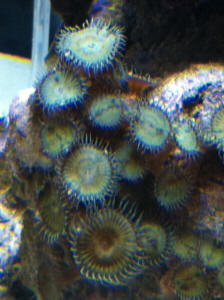
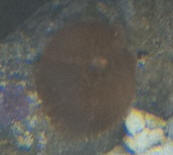 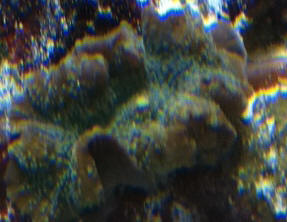 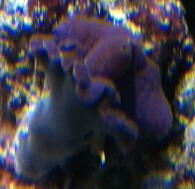
Re Aiptasia (hopefully not) and Other Items Needing
Identification/Coral ID/Reef Lighting 8/24/11-
8/25/11
Thanks for the quick response, it is appreciated!
<You're welcome.>
Regarding the LED lighting, if I added
an additional light would that help so in the future I
could house SPS/LPS corals? Or is the light in
your opinion just not good enough? A little misleading I think
since it states that it is "reef capable"....
<Yes, depending largely on what you want to keep. The Reef
Capable fixture uses one watt LEDs where
the more intense units use three watt LEDs. The PAR level at 12
inches depth measures 130 (referenced material, not measurements
I have taken), and falls off sharply to 61 at three inches off
center axis.
Not nearly enough intensity for most SPS corals and many LPS
corals at that depth. Most stony corals need about 250 PAR to
thrive and a photosynthetic usable radiation range (PUR) of about
440-700nm.
Your fixture may be enough for hard corals that thrive in
moderate light, but you would have to place them very near the
surface of the water. So in essence, it is reef capable. Two of
these fixtures would improve dispersion of your lighting but PAR
values at depth won't improve much if any. The price of the
unit should reflect it's capabilities.>
Thanks again, you guys are really a big help.
<You're welcome. James (Salty Dog)>
Matt
|
|
Aquarium led light offer
7/22/11
Dear sir,
Good day. Bothering, I guess I am wrong for I use
"bother".
Reviewing your website, know you are professional aquarium
product seller.
we are professional aquarium led light manufacturer with almost
10 years history, name Greensun, which locates in Shenzhen city,
China, there are two ports ,the shipping will be very smooth and
cheap.
our main product contains
1 Generation 1 aquarium led light
2 Dimmerable aquarium led light.(with Cree device )
3 Generation 2 and 3 aquarium led light.
4 Silent aquarium led light.(no fans with Cree device )
5 Waterproof aquarium led light bar
6 Intelligent aquarium led light
Here attracting some pictures for you.
details can be refer to www.gbgreensun.en.alibaba.com
and www.gbgreensun.com
Hope you have some interesting on my product and build up
fruitful and stable cooperation with each other.
|
|
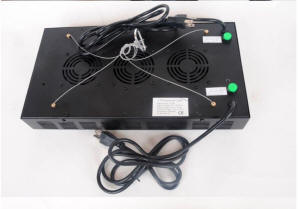 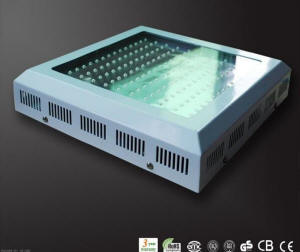
 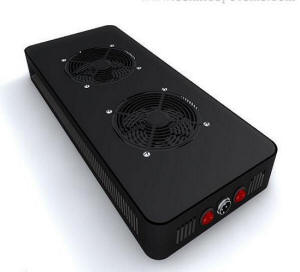
|
Dear Sir,
Although your LED fixtures appear to be well made, I must state
that we do not sell any products on our site.
Our site is geared toward providing information for both the
freshwater and marine hobbyist.
Thank you,
James Gasta |
Reef lighting 5/27/2011
I have been using a 250 watt MH on my reef tank for over 3 years now,
and with the prices of LED fixtures dropping rather rapidly the past 6
months, how do you guys feel about the LED systems coming out
recently?
Thanks!
Nic in Wi.
<We have a few nice pieces on LEDs in our on line 'zine (CA) in
recent issues. Read them, and the accumulated FAQs re: http://wetwebmedia.com/ledltgfaqs.htm
links above.... Bob Fenner>
LED or Metal Halide with T5's/LED Reef Lighting
5/4/2011
HI!
<Hello Nancy>
I currently have a 150 gallon,
48"x24"x30" reef and community fish tank. It
has been set up for a little over a year.
I have tons of live rock, fish are 1 Yellow Tang, 1 Mandarin Gobie
<Goby>, 2 Clowns, 4 anemones (they keep splitting), 1 Velvet
Wrasse
1 Coral Beauty and 1 Flame Angel, and a Powder Blue and Tennant
Tang.
1 Cleaner Wrasse, 1 Blood Shrimp, and believe it or not,
1 Marine Betta.
<Marine Bettas prefer dimly lit systems and will soon grow large
enough to eat small fishes.>
Now I get to the LPS corals. 1 large green brain, 1 white cup coral (I
think) 1 trumpet coral, 1 torch coral, 1 elegance coral, a coco worm, a
finger leather coral, and a favia.
<Please capitalize names of corals and fishes in future
queries.>
My lighting has been an 8, T5 lighting system with moon lights.
Everyone has done well until recently.(corals and anemone's looking
bad) Possibly bulbs dimming. I have been looking into a different
lighting system because I would like to add SPS corals.
<Tank is really too deep for T5 lighting. Will require strategic
placement of light loving animals.>
I'm sure 2, 250 watt metal halides would do the trick, but do
<due> to high energy use and heat output, I was thinking of
trying an LED system.
<Will be very expensive for your depth of tank, likely in the
$2000.00-$2500.00 USD range.>
I do have a good skimmer, UV sterilizer and a chiller. My tank was
custom built and has a removable hood.
What is your opinion on LED systems?
<In time, LED lighting will be the norm for reef systems. At
present, they are still a little unaffordable
for most folks with deep reef systems such as yours.>
I have seen some that have timers for the different types of lighting
throughout the day as well as moons.
<Yes, the Orphek system has one of the best timers I've seen and
had the pleasure to work with. See my review on the Orphek system in
our on-line digital magazine.
http://www.wetwebmedia.com/ca/WWMDigitalMagV1Ish3.htm>
Some have external drivers so system does not have fans and some have
internal drivers with fans.
<The drivers are generally built into the LED module itself. The
power supply provides the power to the drivers.
I liked the Orphek system because it provided cooling fans for both the
drivers and the power supply. Heat is an enemy for electronics and
cooler operating temperatures provide longer life of the unit.>
The ones I am particularly looking at are from Acan Lighting. Do you
have or know of anyone who has experience with these? My main concern
is the depth of my tank. 30".
<I have no personal experience with the Acan systems but I'm
sure you could find plenty of info by Googling.
Have you been to their site? http://www.acanlighting.com/
For your depth of tank, an Acan system is likely to run in the same
price range as mentioned above. Do be aware that many LED units such as
the Orphek provide reflector options of different degrees. The choice
will depend on the depth of tank. Too narrow of a reflector may not
spread the light out enough to cover a particular tank size. Do your
homework with the vendor before purchasing.
I was very close to updating my MH lighting with Orphek LED lighting
but felt in due time the cost will come down dramatically so I decided
to wait it out. The Orphek system actually went north in this regard.
At the time of my review, the Orphek PR 156 was priced at around 650.00
and shortly after, increased to 850.00 per unit. Whoever bought these
units at 650.00 got a bargain. And yes, there is definitely a savings
with LED systems both in energy and lamp replacement cost, but it will
take some time to recover your initial expense.>
I don't know the levels of magnesium, calcium, etc.,
<Should monitor these levels often/weekly.>
but I keep track of pH, and ammonia, nitrites, nitrates. I have a
gentleman from
the local salt water aquarium store maintain my tank and does the water
changes and chemical tests every other week.
<I see.>
Any advice would be appreciated!
Thank you,
<You're welcome. James (Salty Dog)>
Nancy
Re LED or Metal Halide with T5's/LED Reef Lighting
5/4/2011
Thank you James for all the information.
<You're welcome, Nancy.>
Yes, I know the Marine Betta has to go, I just have not been able to
catch him yet.
I am going to move forward to learn more about the Orphek systems.
I'll let you know what I do and how it works.
<Yes, and do keep us informed.>
Thanks again,
<You're welcome. James (Salty Dog)>
Nancy
Cree LED Fixtures 4/28/11
Hello Bob,
<James>
I see on Cree's website they will be releasing LED fixtures for the
home/office in the near future. Mmm, could reef lighting be in their
future plans?
http://crseries.creeledlighting.com/
James
<If they perceive the market sufficient... B>

